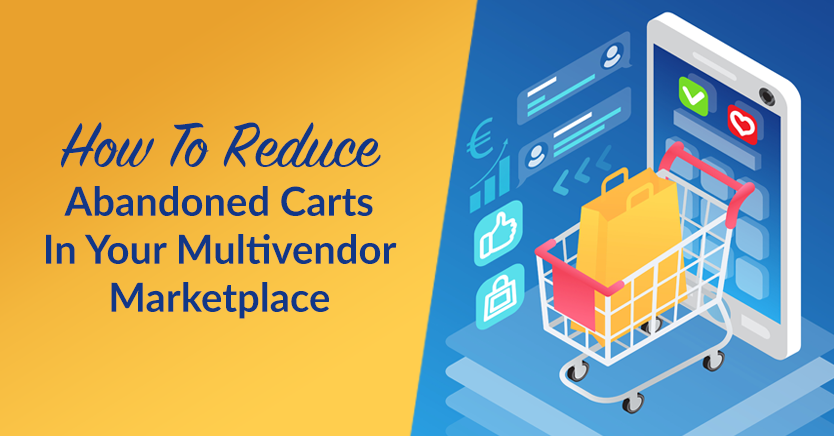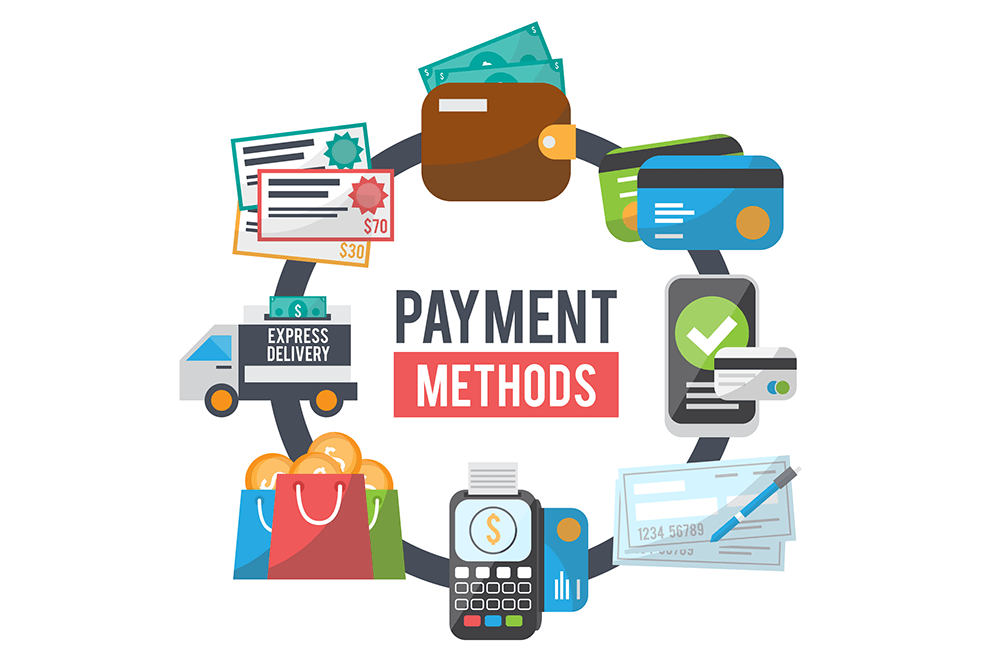
How do you, as the marketplace owner, reduce abandoned carts?
Before we answer that, picture walking into a store and seeing a shopping cart in the middle of an aisle, full of products but with no one around to claim them. The scene suggests a customer had every intention of buying something but at some point changed their mind and went on with their life.
The same thing happens with online shoppers but much more frequently.
The customer adds an item to their cart, getting you as a marketplace owner excited about the purchase you think they’re about to make. Unfortunately, they never go through the checkout process, leaving their cart and their products behind and you you without a sale.
You can’t profit from items that linger in someone’s cart – that’s the problem. And the only way to solve said problem is to figure out how you can reduce abandoned carts in your marketplace.
And that’s what we’re about to teach you to do.
What Is Shopping Cart Abandonment?
The idea of shopping cart abandonment is pretty simple. It happens when someone visits an online store, adds items to their shopping cart, but never completes their purchases.
You can calculate the metric with a pretty simple formula:
Take the total number of purchases divided by the number of carts created. Subtract this number from 1 before multiplying the result by 100. This figure represents your shopping cart abandonment rate.
Need a concrete example? You got it!
Let’s say you have 60 purchases out of 200 carts created. You divide 60 by 200 to get 0.30. Then, you subtract this number from 1 to get 0.7. Lastly, you multiply this figure by 100 to arrive at the final percentage: 70%.
That means only 30% of the carts created turn into purchases, which is actually pretty standard. According to the Baymard Institute, the average cart abandonment rate is 69.82%.

Obviously, online retailers and marketplace owners don’t want this to happen. Nevertheless, they can use their shopping cart abandonment rate to get insights into other aspects of their business, like:
- Customer experience
- Checkout flow
- Payment processing
- Support
Customers don’t usually abandon their shopping carts without reason. They do so as a response to other factors within the e-commerce site.
What Causes Shopping Cart Abandonment?
The Baymard Institute’s research also pinpointed the 10 most common reasons for cart abandonment, which are as follows:
- Unexpectedly high extra costs (48%)
- Needing to create an account (24%)
- Exceedingly slow delivery time (22%)
- Customers didn’t trust the site’s security (18%)
- The checkout process was too complicated (17%)
- Hidden total costs (16%)
- The website crashed (13%)
- Unsatisfactory return policy (12%)
- Not enough payment options (9%)
- The card was declined (4%)
9 Ways To Reduce Abandoned Carts
Reducing your shopping cart abandonment rate will mean more customers actually buy the products they’re interested in. And that means more money in your pocket.
To bring that number down, you need to tackle the blockades that stand in the way of completed purchases. Some need to be addressed head-on; others require additional changes that lead to better outcomes.

With that in mind, here are nine strategies that can help you reduce abandoned carts in your marketplace:
1. Be Transparent With Your Shipping Costs And Other Fees
Nearly half of all cart abandonments come from high shipping costs and other fees like taxes or handling. In a world of free prime shipping and other cheap options, it becomes tough to compete when customers get a surprisingly large dollar figure added to their bill.
While the ideal way to handle the situation is to simply cut those prices down, many online businesses don’t have that luxury. Thankfully, if you find yourself in this category, you can still reduce abandoned carts by informing your customers upfront about these figures.
This eliminates the element of surprise for your customers, which will simultaneously help you build trust with them. Customers can feel tricked by hidden costs. Thus, if you just lay it out in front of them, they may still not like it, but at least they’ll know. And they will have less of a reason to abandon their cart when the time for purchasing comes.
2. Simplify Your Checkout Page
Online shopping exists to make commerce easier. Customers don’t want complexities such as additional forms or pages to click through. In short, they want their products and they want them quickly.
Your checkout process should reflect this reality. Therefore, you should keep things simple. Let the customer move as quickly as possible, getting them to the final checkout page without any unnecessary inconveniences.
3. Offer Guest Checkout Options
This solution might provide the most guaranteed change in your shopping cart abandonment rate. Nearly 1 in 4 customers abandon a cart because they don’t want to make an account. Therefore, give them an option to checkout as a guest, and watch as they gladly click the buy button.
This can feel counterintuitive since many brands want to build long-term relationships with customers. You might even think that gating the purchase helps make this happen. However, the data suggests otherwise.
Basically, customers stay loyal to businesses that let them enjoy positive experiences. Having a guest checkout option may mean you have to wait a little longer to get their info. Fortunately, keeping them happy throughout their customer journey can ultimately help you build a more sustainable relationship with them.

4. Allow Customers To Create Profiles
The previous point doesn’t mean you should forego profile creation forever. In fact, many shoppers will want to set up a permanent account so that they don’t have to continue typing in the same information over and over again.
However, you still want to make this part easy. Thus, only gather the information that you need, and try to limit the number of fields that they have to fill up. After all, you don’t want to scare them away before they even get started.
5. Let Customers Sign In With Social
Points 3, 4, and 5 build off one another. You want to give your online shoppers enough options so that they can find the piece that works for them. Some will prefer custom profiles. Others will want to continue as a guest. But a third category has become more popular in recent years:
Signing in with social.
Typically, customers find it easier to link a new profile with their existing social media accounts on platforms like Facebook, Instagram, and others. In addition, this strategy can up your social proof game if you give your customers a little nudge to share their purchases with friends.
6. Have Multiple Payment Options Onsite
As the internet grows in sophistication, e-commerce sites have to follow. It’d be easy to think that a simple credit card processor would be the only payment option you need. However, today’s marketplace has a variety of other options.
For example, many shoppers use PayPal to make their purchases. So if your marketplace doesn’t accommodate this payment option, they’ll very likely find one that does.

7. Develop A Follow-Up Strategy
Typically, online shopping is done halfheartedly, with some customers putting items in their cart and intending to return to them eventually. Some customers need a little extra reminder to finalize their purchase. On the other hand, there are those who require a gentle nudge in the right direction.
Sending a simple follow-up or reminder message will help you push those people in the right direction. However, you’ll want to be careful with this by ensuring that you don’t seem too pushy or salesy. If you can strike the balance and guide buyers to make a decision, you’ll effectively reduce abandoned carts in your marketplace.
8. Make Your Refund And Return Policy Readily Available
Online shopping can feel a bit daunting. After all, you can’t touch the product or see how it fits or looks in person. Understandably, customers want to know that their purchases are protected. And the easiest way to alleviate their fears is by displaying your return and refund policies.
You can instill trust in your customer base by making these policies readily available. Basically, if you have a customer-centric policy that allows shoppers to purchase without any fear, they’ll know that you care about their happiness, not just their money.
9. Keep Your Site Running Smoothly At All Times
One of the simplest ways to reduce abandoned carts is to ensure that your website doesn’t bug out at the wrong time. Therefore, use a secure marketplace builder that will help you avoid such problems. This way, you can keep your site running smoothly and your customers happy.
WC Vendors makes it easy to build, launch, and manage a multi-vendor marketplace that will grow with your business. Our platform has served as the foundation for thousands of marketplace owners to create a reliable and long-lasting e-commerce venture. In short, it keeps your site running and in excellent condition so that you won’t ever let your customers down.

Closing Thoughts
Your shopping cart abandonment rate won’t ever go down to zero. After all, shoppers will always change their minds about their purchases. Nevertheless, you can greatly reduce abandoned carts in your marketplace by making a few simple adjustments to your processes.
To recap, here are nine strategies that can help you reduce abandoned carts in your marketplace:
- Be transparent with your shipping costs and other fees
- Simplify your checkout page
- Offer guest checkout options
- Allow customers to create profiles
- Let customers sign in with social
- Have multiple payment options onsite
- Develop a follow-up strategy
- Make your refund and return policy readily available
- Keep your site running smoothly at all times
By employing these strategies, you can keep your customers happy and those carts out of the virtual aisles.
Would you like to know more about how to reduce abandoned carts in your marketplace? Reach out to us and let us know; we’d be happy to hear from you!